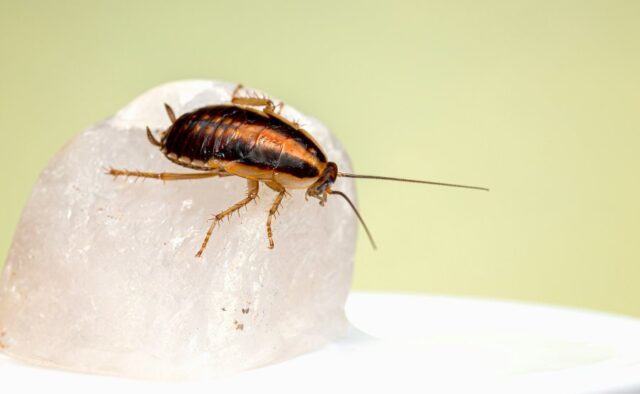Dealing with pests can be a harrowing and persistent problem that many homeowners face. From ants to termites, bedbugs to roaches, these unwanted invaders have a knack for showing up and a reputation for being stubborn when it comes to getting them to leave.
This guide is designed to arm you with the knowledge, techniques, and products to tackle pest problems at various stages. Whether you’re in the midst of an infestation or seeking prevention tips, this comprehensive post will help you realize that with the right approach, you can maintain the upper hand in the battle against household pests.
Understanding the Enemy: Common Household Pests
Before you can effectively fight pests, it’s important to understand their habits, weaknesses, and what might be attracting them to your home. Common household pests include:
- Ants: They come in many varieties, but most are drawn to food and water. Keeping a clean kitchen and sealing any entry points can help prevent infestations.
- Roaches: With their ability to eat nearly anything, roaches are among the toughest house pests. Reducing available food sources and fixing leaks can make your home less hospitable to them.
- Bedbugs: These nocturnal pests feed on blood and are often found near sleeping areas. Regular vacuuming and decluttering can help spot and eliminate them early.
- Rodents: Mice and rats can cause damage and spread disease. Eliminate entry points and keep food sealed to discourage them from entering your home.
- Termites: These wood-eating pests can cause significant structural damage. Regular inspections and keeping wood away from your house can help protect against termites.
Understanding the pests’ motivations will help inform your prevention and eradication strategies.
Prevention is the Best Defense
An old adage that rings especially true when it comes to pests is that prevention is better than cure. Here are some tips to prevent a pest problem from starting:
- Seal Entry Points: Pests can enter your home through the tiniest cracks and crevices. Inspect your home’s exterior and interior for any openings and seal them with caulk, steel wool, or expanding foam.
- Keep It Clean: Regular cleaning is essential. Wipe down surfaces, sweep floors, and take out the trash frequently. Pay close attention to the kitchen, where crumbs and spills can quickly attract ants and roaches.
- Remove Standing Water: Pests need water too. Fix any leaks and avoid leaving water standing in sinks or trays under houseplants.
- Control Clutter: Piles of newspapers, stacks of boxes, and other clutter offer pests great hiding spots. Declutter and store items properly to minimize potential hiding places.
- Screen Vents and Chimneys: Ensure all vents and chimney openings are covered with mesh screens to prevent pests from entering.
By implementing these measures, you can make your home less inviting to pests and reduce the chances of an infestation taking hold.
DIY Pest Control Methods
If you’ve spotted a pest or two and are looking to address the issue before it gets out of hand, here are some DIY methods you can try:
- Baits and Traps: For smaller infestations, baits and traps can be incredibly effective. There are many options available for various pests, so choose the right one for your problem.
- Cleaning: Deep clean the infested area and vacuum regularly to remove pests and their eggs. After vacuuming, be sure to dispose of the vacuum bag in a sealed plastic bag outside your home.
- Natural Repellents: Some pests are sensitive to smells like peppermint, citrus, or vinegar. Using these scents in the form of sprays or diffusers can deter pests from certain areas.
- Heat Treatment: For bedbugs and other pests that infest fabric, laundering items at high temperatures can kill them. Similarly, steam cleaning carpets can eliminate pests that dwell within the fibers.
Be sure to follow instructions carefully and research specific methods for the type of pest you’re dealing with to ensure the most effective results.
When to Bring in the Professionals
Sometimes, despite our best efforts with DIY methods, pest infestations can persist or even worsen. If you’re faced with a persistent problem, it’s time to call in professional pest control services. Experts have access to more potent treatments and can safely apply them to affected areas, ensuring that the infestation is dealt with effectively, as the team from Orkin explains. They also bring valuable experience and can offer tailored solutions based on the specific type of pest and the severity of the situation. Remember, the cost of professional help can be a worthy investment when it comes to protecting your home and health from the damages that unchecked pests can cause.
Eco-Friendly Pest Control Options
For those seeking environmentally conscious solutions, the good news is that there are eco-friendly pest control options that are both safe and effective. Methods such as integrated pest management (IPM) prioritize the ecosystem and typically involve biological pest control, habitat manipulation, and the use of resistant varieties of plants. Chemicals are used as a last resort and selected to be of low toxicity and minimize harm to other organisms. Additionally, there are numerous green products on the market made from natural ingredients that target specific pests without collateral damage to the environment. By exploring these sustainable practices, homeowners can take a stand against pests while also safeguarding the health of their families and the planet.
Adopting a Pest-Resistant Lifestyle
To maintain a pest-free home in the long term, adopting a pest-resistant lifestyle is crucial. This means:
- Regular Inspections: Stay vigilant. Regularly inspect common entry points and areas where pests might gather.
- Landscaping: Keep trees and shrubs trimmed away from your home to prevent easy access for pests.
- Storage: Store food in airtight containers, and keep pet food and bird seed in sealed containers as well.
- Maintenance: Fix leaks, keep your home in good repair, and consider regular pest control maintenance visits to keep on top of any potential issues before they become problems.
Pests are a common issue that can be overcome with knowledge, patience, and persistence. By understanding the pests you’re dealing with, preventing their entry, learning effective DIY methods, knowing when to call in professionals, opting for eco-friendly solutions, and maintaining a lifestyle that resists pests, you can significantly reduce the threat they pose to your home and health.
Remember that every home and pest problem is unique, so be flexible and willing to try different approaches to find what works best for you. With these tips, you can turn the tables on household pests and reclaim your home as the safe, comfortable space it’s meant to be.














